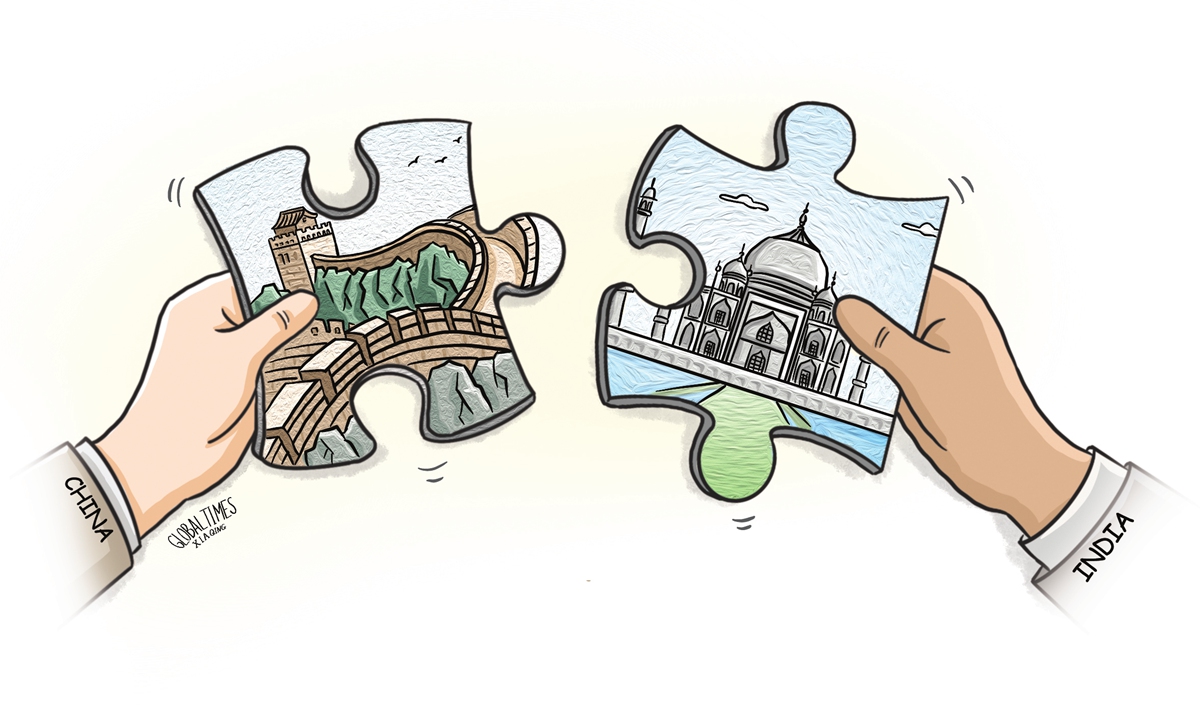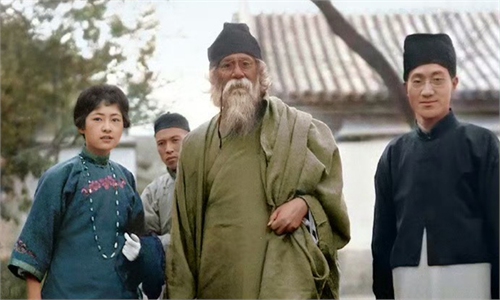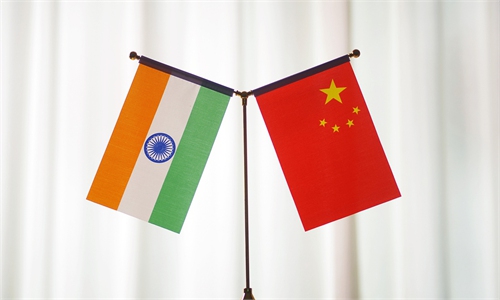
Illustration: Xia Qing/GT
One hundred years ago, celebrities in the Chinese cultural community invited Tagore, the famous Indian poet and writer, to visit China, which was a significant event in the cultural circles of both China and India. Tagore's visit symbolized mutual understanding between the two ancient civilizations and an attempt to establish new ties.China and India established diplomatic relations quickly after the establishment of the People's Republic of China. By 1954, the relationship between the two countries had reached its peak, when a joint statement issued by the two countries confirmed the Five Principles of Peaceful Coexistence, creating a new model of international relations.
However, thereafter, the cultural exchanges between the two countries have experienced a bumpy road. The situation has been very clear in the past few years. Due to the influence of political relations, cultural and people-to-people exchanges between the two countries have been seriously disrupted, and Chinese students face challenges in obtaining the necessary visa to study in India. Despite this, the author's recent visits to India suggest that there is a desire on the Indian side to restore cultural and think-tank exchanges to some extent.
The regrettable situation in the relationship between China and India, especially in terms of cultural and humanistic exchanges, is closely related to changes in India's domestic politics, the rise of Hindu nationalism, and the overall right-wing trend in Indian social thought over the past decade.
Additionally, it is influenced by shifts in the international strategic landscape.
Against the backdrop of the strategic competition between China and the US, many Indian strategists regard it as a strategic opportunity for India, hoping to use this opportunity to achieve economic take-off and rise as a great power. Therefore, they promoted the formation of the US' Indo-Pacific Strategy, while containing China, and pursuing economic "de-Sinicization" or "alternative to China" policies. During this process, they provoked border conflicts, instrumentalized border issues, and sought to please the US at the expense of China-India relations. The Indian government has not only suppressed Chinese enterprises in India, but has also adopted restrictive measures for cultural exchanges between the two countries. The Indian Ministry of Education has decided to review the Confucius Institutes in China and the Confucius Classrooms established by Chinese and Indian universities. In addition, 54 MoUs on intercollegiate cooperation signed by Chinese universities and Indian universities are also under review.
Culturally, the Modi government sees itself as a Vishvaguru, world teacher. Anyone with normal thinking will know that such exchanges must be two-way. It is clearly recorded in Chinese historical records that Master Xuanzang once translated the Tao Te Ching and spread the words of the Chinese classic text throughout India. Some Chinese scholars believe that the Indian Vastu actually originated from Chinese feng shui. But why do Indians always think that India is the teacher and China is the student? I think there may be two reasons: First, China has been open and inclusive for most of its history, and is also modest and good at learning from other civilizations; second, India has always lacked a tradition of real historical research and serious historical records, and has a tradition of enjoying being the teacher.
Last year, the Consulate General of India in Shanghai held an event to celebrate the International Year of Millets 2023 to which I was invited. The Consul General was pleased to personally introduce seven varieties of millet to me and said that millet originated in India and was discovered in the Harappa ruins 5,000 years ago. However, it is well known that the Yellow River Basin in China was the earliest region to cultivate millet, with millet remains unearthed from Cishan in Hebei and Xinglongwa in Inner Mongolia dating back over 8,000 years. The seven varieties of millet mentioned by Indians are all grown in northern China. It is inappropriate to claim that millet originated in India in front of Chinese individuals.
In the cultural and people-to-people exchanges between China and India, the Chinese side should adhere to the principle of equality and reciprocity. We cannot be assumed that cultural and people-to-people exchanges will automatically enhance bilateral relations.
There have been instances where a small number of Chinese scholars or businessmen have blindly promoted cultural projects with strong religious and political undertones driven by economic or political interests. These projects have had negative impacts on China's political, economic, social, and cultural interests.
For future cultural exchanges between China and India, the Chinese side should not engage in exchanges for the sake of it, but rather aim to genuinely promote bilateral relations and alter India's perception of China. Chinese scholars should uphold cultural self-confidence, conduct in-depth research on various aspects of India, criticize and oppose India's erroneous views and practices. Indian scholars should also criticize the narrow and short-sighted policies of the Modi government toward China.
The author is director and senior fellow of the Center for South Asia Studies at Shanghai Institutes for International Studies. opinion@globaltimes.com.cn


